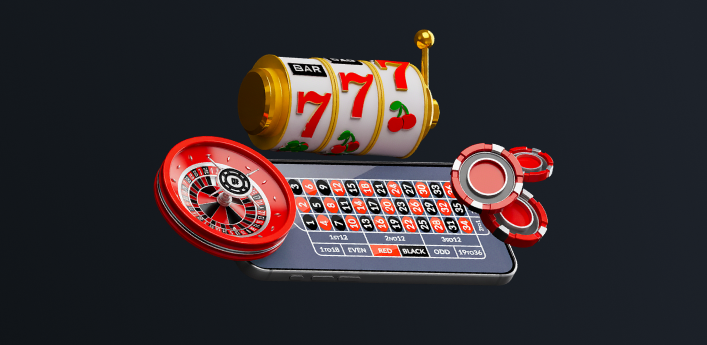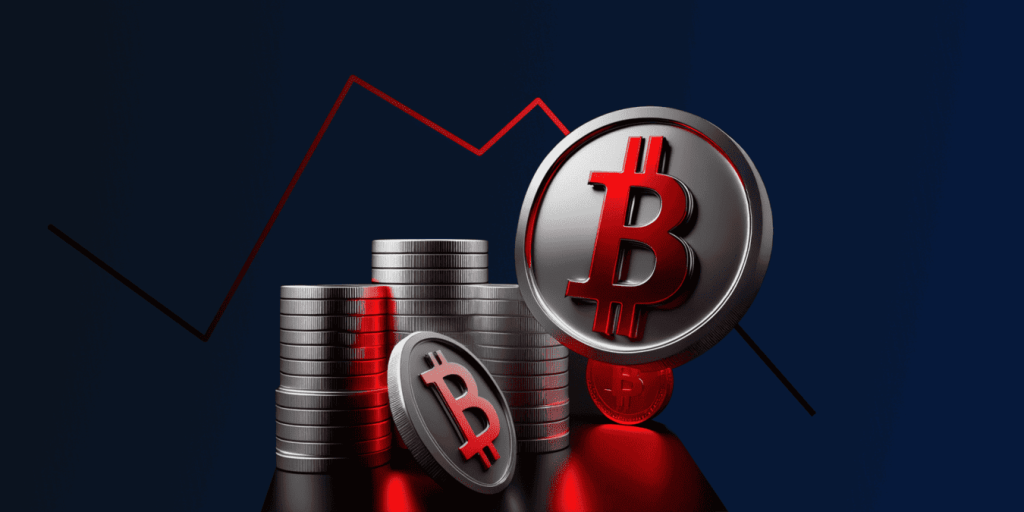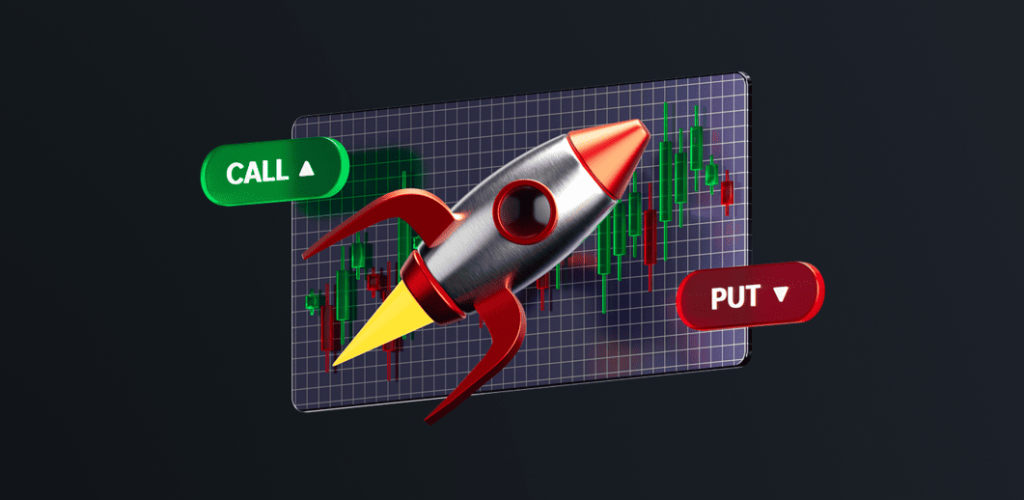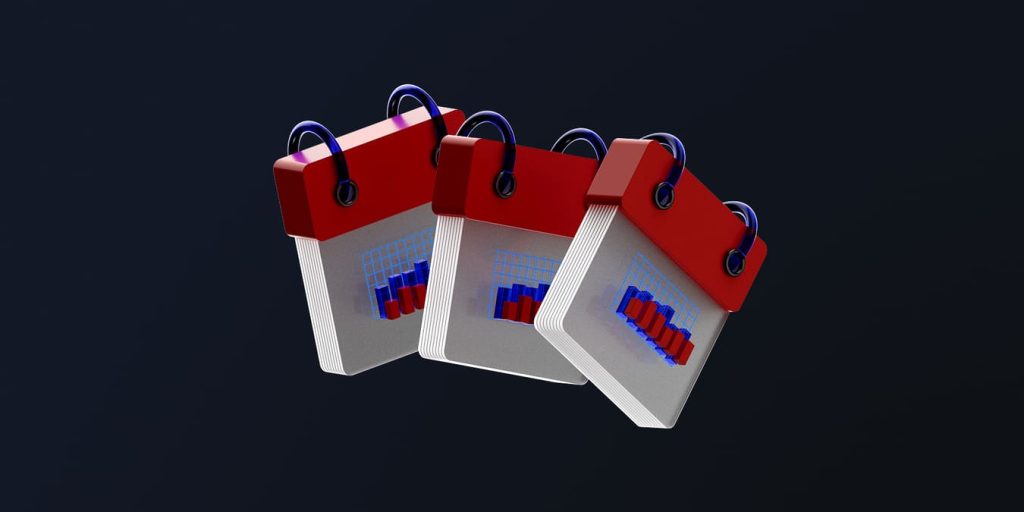
Hợp đồng tương lai là gì và chúng hoạt động như thế nào?
Mục lục
Giới thiệu
Hợp đồng tương lai là một công cụ quan trọng cho phép cá nhân đầu cơ, phòng ngừa rủi ro hoặc bày tỏ quan điểm về biến động giá trong tương lai của các tài sản cơ sở. Giao dịch tương lai bắt đầu vào giữa những năm 1800 để giúp nông dân chốt giá mùa màng, nhưng kể từ đó đã phát triển thành một thị trường toàn cầu phức tạp. Ngày nay, hợp đồng tương lai được sử dụng cho các vị thế liên quan đến mọi thứ, từ chỉ số chứng khoán đến tiền tệ, hàng hóa, lãi suất, v.v.
Hôm nay, chúng ta sẽ tìm hiểu khái niệm hợp đồng tương lai, cách thức hoạt động, lợi ích và rủi ro đi kèm. Chúng ta sẽ xem xét các thị trường tương lai phổ biến, những cân nhắc chính khi lựa chọn nền tảng tương lai, xây dựng kế hoạch giao dịch và cách bắt đầu giao dịch.
Hợp đồng tương lai là gì?
Hợp đồng tương lai về cơ bản là một thỏa thuận ràng buộc giữa người mua và người bán để giao dịch một lượng tài sản cơ sở nhất định với mức giá được xác định trước vào một ngày trong tương lai. Các hợp đồng này được các sàn giao dịch chuẩn hóa về chất lượng, quy mô đơn vị và các khía cạnh quan trọng khác để đảm bảo tính đồng nhất và tạo điều kiện thuận lợi cho giao dịch thanh khoản.
Khi mua hợp đồng, người mua cam kết mua tài sản, trong khi người bán cam kết giao hàng. Tuy nhiên, với khả năng bù trừ trước ngày hết hạn trong mô hình giao dịch trên sàn, việc giao hàng thực tế có thể được loại bỏ đối với hầu hết người tham gia. Đặc điểm cốt lõi tạo nên sự khác biệt của hợp đồng tương lai là chúng có thể được giao dịch trên các thị trường giao dịch điện tử tập trung, không giống như thị trường phi tập trung.
Các sàn giao dịch cũng yêu cầu các vị thế mở phải được thanh toán bằng tiền mặt hàng ngày bằng cách định giá hợp đồng theo giá trị hợp lý cuối ngày. Điều này cho phép các nhà giao dịch nhận được lợi nhuận và thua lỗ một cách liên tục, thay vì phải chờ đến ngày đáo hạn. Hợp đồng cũng được niêm yết theo kỳ hạn giao hàng hàng tháng được chuẩn hóa, với các tháng liên tiếp có sẵn để giao dịch sau này.
Nhiều thị trường tương lai cung cấp cho người tham gia khả năng thiết lập các hợp đồng tương lai giá rẻ, ngắn hạn hoặc vị thế đòn bẩy theo vô số cách. Tài sản có thể giao dịch trải dài từ hàng hóa nông nghiệp và kim loại công nghiệp đến các nguồn năng lượng, chỉ số chứng khoán, tiền điện tử, v.v. Ví dụ: hợp đồng tương lai E-mini S&P 500 định nghĩa trước những thay đổi về giá trị của chỉ số chứng khoán vốn hóa lớn S&P 500 của Mỹ, trong khi hợp đồng tương lai dầu thô WTI cho phép tiếp xúc trực tiếp với biến động giá dầu.
Tóm lại, hợp đồng tương lai giới thiệu các thỏa thuận hợp đồng được tối ưu hóa cho việc giao dịch tài sản thanh khoản, có giá toàn cầu thông qua các sàn giao dịch tập trung. Định dạng hợp đồng chặt chẽ và cơ sở hạ tầng giao dịch phát triển tốt hỗ trợ khả năng mở rộng giao dịch các rủi ro.
Giao dịch tương lai hoạt động như thế nào
Các sàn giao dịch như CME Group hoặc ICE cung cấp thị trường tập trung nơi các nhà giao dịch có thể tiếp cận giá hàng hóa, tài chính và tài sản trên toàn cầu. Thanh khoản sâu được tạo ra do các thông số kỹ thuật chuẩn hóa của hợp đồng do các sàn giao dịch đặt ra.
Nó sẽ xác định các hợp đồng tương lai dựa trên các thông số như quy mô đơn vị, tháng đáo hạn và tài sản cơ sở. Do đó, trọng tâm của các chức năng do một sàn giao dịch thực hiện là hệ thống tự động hóa. sự kết hợp của người mua và người bán , việc thanh toán các giao dịch được thực hiện và việc triển khai các khuôn khổ pháp lý.
Tất cả những gì cần thiết để thiết lập vị thế là các nhà giao dịch phải ký quỹ ban đầu cùng với một khoản tiền gửi thiện chí với sàn môi giới của họ; tuy nhiên, số dư ký quỹ này cần được duy trì nếu muốn duy trì mức độ rủi ro trong hợp đồng. Do đó, đòn bẩy cho phép sử dụng theo nghĩa là các khoản ký quỹ nhỏ kiểm soát mức độ rủi ro danh nghĩa lớn.
Ví dụ, một nhà giao dịch có thể chỉ cần 20% giá trị hợp đồng tương lai dầu thô. Các sàn giao dịch tiếp tục giảm thiểu rủi ro liên quan thông qua việc ghi nhận lãi/lỗ hàng ngày giữa tài khoản của nhà giao dịch và tài khoản môi giới.
Việc tham gia nhiều tháng đáo hạn cho phép các nhà giao dịch tùy chỉnh các mốc thời gian phòng ngừa rủi ro hoặc đầu cơ. Những nhà giao dịch có tầm nhìn dài hạn hơn có thể luân chuyển hợp đồng định kỳ bằng cách bán hợp đồng gần đáo hạn và thiết lập lại vị thế bù trừ ở thời điểm xa hơn.
Gần đến hạn, giá của từng hợp đồng sẽ hội tụ về mức giá giao ngay của tài sản cơ sở. Cấu trúc tập trung, được quản lý chặt chẽ của các sàn giao dịch tương lai do đó mang lại giá cả minh bạch, thanh khoản cao, đồng thời bảo vệ người tham gia thông qua quy trình ký quỹ và thanh toán hàng ngày.
You may also like

Ưu điểm và rủi ro của giao dịch tương lai
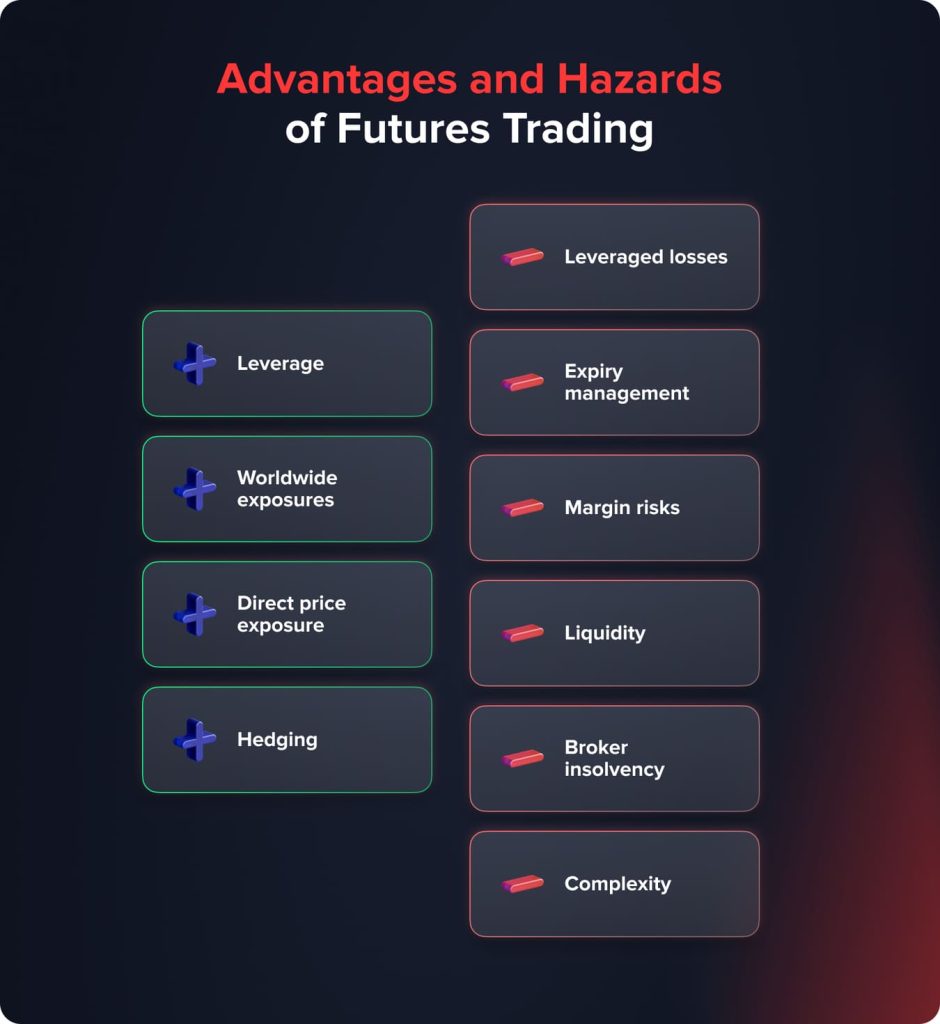
Những lợi ích:
- Đòn bẩy: Một phần nhỏ so với giá trị thực của hợp đồng, được gọi là ký quỹ ban đầu, mà nhà giao dịch ký quỹ, cho phép kiểm soát các vị thế lớn. Nó làm tăng cả lợi nhuận lẫn thua lỗ tiềm năng.
- Tiếp xúc trên toàn thế giới: Gần như bất kỳ tài sản cơ bản nào được giao dịch ở bất kỳ đâu trên thế giới đều có thể được nhà giao dịch tiếp cận gần như 24/7 do tính chất toàn cầu của các sàn giao dịch tương lai.
- Tiếp xúc giá trực tiếp:Đây là mức giá có thể đạt được thông qua việc tham gia vào quan điểm mua hoặc bán thông qua hợp đồng tương lai, cho phép các nhà giao dịch hưởng lợi ngay lập tức từ những thay đổi về giá của tài sản cơ sở.
- Phòng ngừa rủi ro: Hợp đồng tương lai cung cấp cho các công ty và nhà giao dịch các công cụ để giảm thiểu rủi ro, bảo vệ dòng tiền hoặc giá trị hàng tồn kho trước những biến động giá bất lợi.
Rủi ro:
- Tổn thất đòn bẩy: Đòn bẩy làm tăng lỗ cũng như tăng lợi nhuận. Những biến động giá bất lợi nhỏ có thể, với tốc độ chóng mặt, làm xói mòn số dư ký quỹ, buộc phải thanh lý sớm.
- Quản lý ngày hết hạn: Hợp đồng tương lai có kèm theo ngày hết hạn, do đó, các nhà giao dịch buộc phải chuyển vị thế để tránh hết hạn hoặc thanh toán bằng tiền mặt, liên tục phải chịu thêm chi phí.
- Rủi ro biên độ: Cần theo dõi liên tục mức ký quỹ và dòng tiền, vì các thay đổi được thanh toán bằng tiền mặt hàng ngày. Ví dụ, việc nhận hàng đối với tài sản cơ sở không được thực hiện trực tiếp. Tình huống này có thể dẫn đến lệnh gọi ký quỹ, khiến các nhà giao dịch bị mắc kẹt.
- Tính thanh khoản:Trong một số hợp đồng tương lai ít thanh khoản, tính thanh khoản có thể bốc hơi đột ngột, làm gia tăng chênh lệch giá mua-bán và khiến việc thoát khỏi vị thế nhanh chóng trở nên rất khó khăn.
- Môi giới phá sản: Trong trường hợp nhà môi giới phá sản, các nhà giao dịch có thể mất tiền vì nhà môi giới nắm giữ số dư ký quỹ của các nhà giao dịch.
- Độ phức tạp: Với đòn bẩy, ngày hết hạn và việc liên tục ghi nhận lãi/lỗ vào thị trường, cần có nhiều kinh nghiệm về sản phẩm để quản lý rủi ro trong hợp đồng tương lai.
Thị trường tương lai phổ biến
Hợp đồng tương lai chỉ số cổ phiếu
Hợp đồng tương lai chỉ số cổ phiếu được sử dụng để tận dụng đòn bẩy từ những thay đổi trên thị trường chứng khoán hoặc các lĩnh vực mà không cần phải mua quá nhiều cổ phiếu riêng lẻ. Một số loại phổ biến nhất bao gồm:
- Hợp đồng tương lai chỉ số S&P 500: Những chỉ báo này cung cấp cơ hội theo dõi một trong những chỉ báo quan trọng thay đổi trên thị trường chứng khoán Hoa Kỳ. Chỉ báo này cung cấp chênh lệch giá mua/bán hẹp và khối lượng giao dịch cao nhờ tính thanh khoản.
- Hợp đồng tương lai Nasdaq 100:Điều này liên quan đến việc tiếp xúc với các cổ phiếu phi tài chính lớn nhất được niêm yết trên sàn giao dịch Nasdaq, bao gồm các tên tuổi công nghệ và công nghệ sinh học hàng đầu.
- Hợp đồng tương lai DJIA: Chỉ số này đo lường sự thay đổi giá của các cổ phiếu blue-chip tạo nên Chỉ số Trung bình Công nghiệp Dow Jones. Chỉ số này cũng nắm bắt những thay đổi trong các cổ phiếu chu kỳ vốn hóa lớn.
Hàng hóa tương lai
Hàng hóa chắc chắn là một trong những trụ cột của giao dịch tương lai. Các thị trường chính ở đây bao gồm:
- Năng lượng:Dầu thô (WTI, Brent), khí đốt tự nhiên và xăng đã trở thành thước đo quan trọng cho hoạt động kinh tế và lạm phát.
- Kim loại quý: Vàng và bạc có xu hướng giữ giá trong thời kỳ thị trường biến động và giá của chúng chịu ảnh hưởng đáng kể bởi định giá tiền tệ.
- Nông nghiệp: Ngô, đậu nành và lúa mì giúp các nhà sản xuất và công ty thực phẩm phòng ngừa rủi ro nguồn cung. Các mặt hàng khác bao gồm cà phê, đường, gia súc và lợn.
Hợp đồng tương lai tiền tệ
Các cặp tiền tệ chính và mới nổi—như USD/JPY, EUR/USD, GBP/USD, AUD/USD—được thúc đẩy bởi khối lượng giao dịch chênh lệch lãi suất và hoạt động mua/bán giữa các quốc gia. Chúng mang lại khả năng tiếp cận thị trường quốc tế.
Lãi suất tương lai
Các nhà đầu tư sử dụng trái phiếu kho bạc và hợp đồng tương lai Eurodollar để đầu cơ hoặc phòng ngừa rủi ro danh mục đầu tư trước những thay đổi về chi phí đi vay có tác động lớn đến giá tài sản.
Hợp đồng tương lai tiền điện tử
Hợp đồng tương lai Bitcoin và Ether cho phép người tham gia thị trường tiếp cận tiền điện tử thông qua các sàn giao dịch và lưu ký được quản lý, bỏ qua vấn đề sở hữu tài sản kỹ thuật số thực tế. Khối lượng giao dịch tăng vọt vì tài sản kỹ thuật số đã trở nên phổ biến.
Những cân nhắc chính khi lựa chọn nền tảng giao dịch tương lai
Dễ sử dụng và Công cụ nền tảng
Khi cân nhắc một nhà môi giới tương lai, người ta phải chọn một cá nhân có thể cung cấp một nền tảng dễ sử dụng và trực quan. Giao dịch đòn bẩy ngụ ý rằng cần có các kỹ năng nâng cao; do đó, điều cần thiết là một giao diện người dùng giúp công việc dễ dàng hơn, không làm lộn xộn nó với quá nhiều mục.
Duyệt qua các tùy chọn bằng cách thực hiện giao dịch demo để tìm kiếm một hệ thống trình bày cơ chế giao dịch, biểu đồ và dữ liệu thị trường một cách rõ ràng nhất có thể. Hệ thống phải cung cấp biểu đồ mạnh mẽ, có thể cấu hình cho các khung thời gian khác nhau, để thực hiện phân tích kỹ thuật hiệu quả. Một nền tảng tốt nên cung cấp đa dạng các loại lệnh, ngoài giới hạn và lệnh dừng, mang lại sự linh hoạt trong quản lý giao dịch.
Chức năng di động
Thị trường tương lai đòi hỏi giờ giao dịch qua đêm, do đó cho phép phản ứng giá tức thời với các sự kiện toàn cầu. Về mặt này, các nền tảng di động cho phép truy cập tài khoản liền mạch từ mọi thiết bị là một lợi thế bổ sung.
Cho dù kiểm tra vị thế khi di chuyển hay thực hiện giao dịch tại nhà vào cuối tuần, các ứng dụng di động mạnh mẽ ngang bằng với phiên bản máy tính để bàn giàu tính năng luôn duy trì phản hồi ở mức tốt nhất. Công nghệ phát trực tuyến video để phản chiếu màn hình máy tính giúp việc giám sát mọi lúc mọi nơi trở nên dễ dàng mà không bị giới hạn độ trễ.
Công cụ và dịch vụ nâng cao
Các nhà giao dịch chuyên nghiệp hơn cần các công cụ mạnh mẽ cho các chiến lược thuật toán tự động. Các nhà môi giới có API tùy chỉnh cung cấp quyền truy cập vào các công cụ này bằng cách bổ sung khả năng thêm các giải pháp mã hóa tùy chỉnh. Hầu hết các nhà môi giới này cũng cung cấp nguồn cấp dữ liệu thị trường để phân tích bổ sung từ bên thứ ba.
Các công ty môi giới nên hỗ trợ công nghệ với đội ngũ hỗ trợ khách hàng có thể giúp giải quyết nhanh chóng các trục trặc hoặc vấn đề vận hành, vì các sản phẩm phức tạp như hợp đồng tương lai đòi hỏi chuyên môn cao. Hãy đào sâu hơn nữa với các nguồn tài nguyên giáo dục, phân tích thị trường chuyên nghiệp và diễn đàn cộng đồng.
Thời gian dùng thử và mở tài khoản
Tận dụng tối đa thời gian dùng thử nền tảng hiện có để sử dụng tài khoản demo nhằm kiểm tra tính nhất quán với điều kiện thị trường thực tế. Kiểm tra các tương tác trên thiết bị di động và web. Hỏi bộ phận dịch vụ khách hàng về các ứng dụng sáng tạo. Khi đã đáp ứng yêu cầu, hãy mở tài khoản được cấp vốn và kiểm tra xem quy trình phê duyệt kỹ thuật và quy định để tiếp cận các sản phẩm đòn bẩy có diễn ra suôn sẻ hay không.
Phát triển Kế hoạch Giao dịch
Tuy nhiên, một kế hoạch hiệu quả cho giao dịch tương lai là điều cốt yếu đối với mỗi nhà giao dịch khi xây dựng quy trình của mình và quản lý rủi ro . Chúng ta hãy phân tích kỹ hơn những yếu tố chính này.
Định nghĩa chiến lược
Trước tiên, hãy xác định phác thảo chiến lược chính của bạn: liệu chiến lược này sẽ chủ yếu xoay quanh chiều mua, thông qua việc đặt cược vào việc giá tăng; chiều bán, thông qua việc kiếm lời từ việc giá giảm; hay cân bằng rủi ro thông qua chênh lệch giá. Xác định xem bạn sẽ sử dụng các chỉ số kỹ thuật , chẳng hạn như đường trung bình động, hoặc nếu bạn phân tích sâu về động lực cung/cầu hiện tại. Chiến lược của bạn không chỉ cần phù hợp với quan điểm của bạn về thị trường mà còn cả khả năng chịu đựng rủi ro. Nếu bạn cảm thấy thị trường sẽ rất biến động, thì chênh lệch giá giúp giảm thiểu rủi ro tiềm ẩn có thể phù hợp hơn so với các chiến thuật mua dài hạn.
Định cỡ vị trí
Ở giai đoạn này, hãy tính toán cẩn thận quy mô vị thế, cân nhắc giá trị hợp đồng so với số dư tài khoản và mức đòn bẩy được sử dụng. Xác định các quy tắc rủi ro giới hạn mỗi giao dịch đơn lẻ không quá 1-2% vốn chủ sở hữu để đảm bảo phân tán rủi ro. Xác định các phép đo vị thế đơn vị khi kiểm soát toàn bộ hợp đồng hoặc cổ phiếu lẻ. Phác thảo các kỹ thuật mở rộng quy mô bằng cách cắt giảm hoặc thêm vị thế vào một cách logic khi giá giảm.
Mức độ vào/ra
Thiết lập các điều kiện tín hiệu và mức giá cho việc vào/ra giao dịch nhằm vô hiệu hóa mọi phản ứng cảm xúc. Các mức này được suy ra từ các chỉ báo kỹ thuật như Fibonacci thoái lui hoặc có thể kết hợp một số yếu tố cơ bản liên quan đến dữ liệu hàng tồn kho. Quy tắc bán được đặt ra, bao gồm đảo ngược vị thế sau khi xác nhận giảm và thắt chặt lệnh dừng lỗ trong bối cảnh biến động cao.
Đánh giá hiệu suất
Chiến lược giao dịch giấy để kiểm tra lại trước khi quyết định, sau đó thường xuyên xem xét hiệu suất để liên tục cải thiện kỹ thuật theo thời gian. Lưu ý các thiết lập có xác suất cao và điểm yếu để tăng cường xử lý tín hiệu và tinh chỉnh phương pháp tiếp cận rủi ro/lợi nhuận. Hợp tác với các đồng nghiệp để có những góc nhìn khác nhau và điều chỉnh cho phù hợp với xu hướng và điều kiện thị trường thay đổi.
You may also like
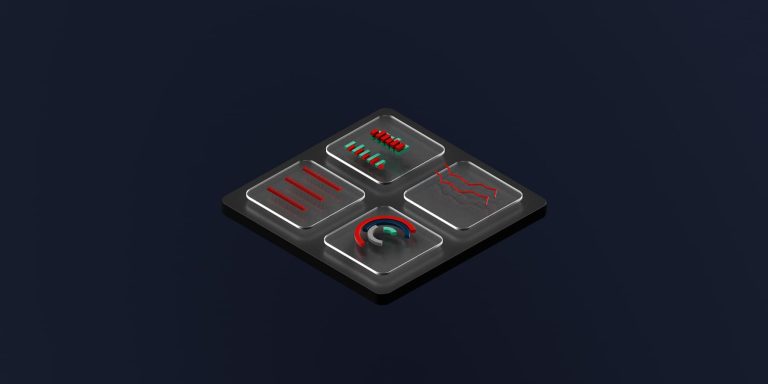
Các bước để bắt đầu giao dịch tương lai
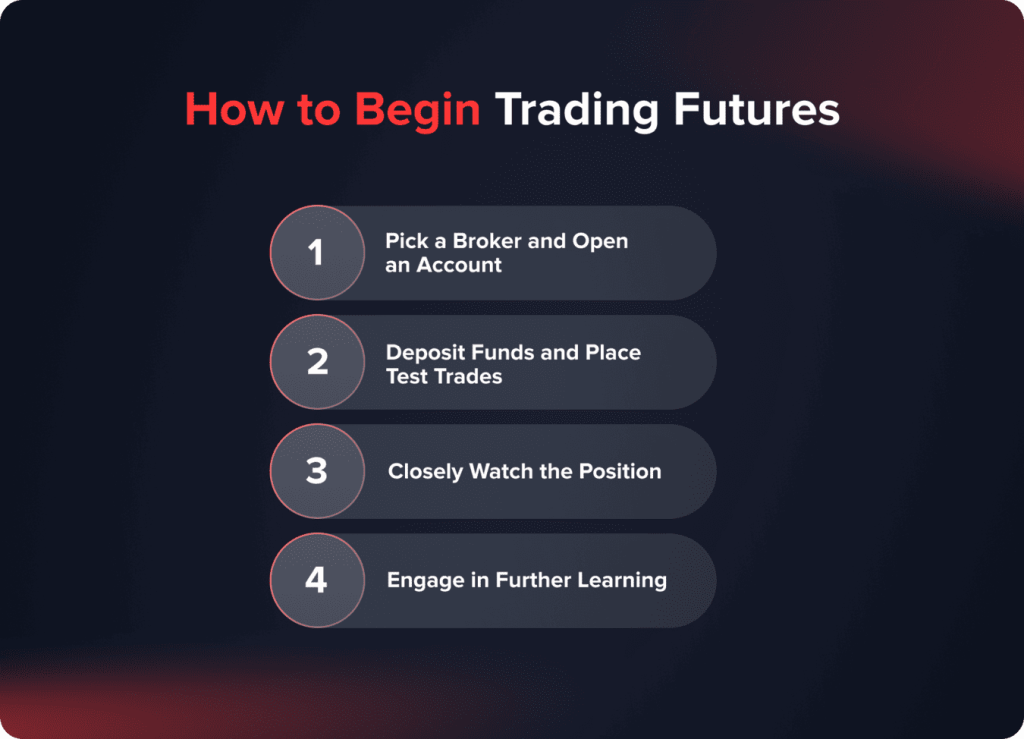
Chọn một nhà môi giới và mở một tài khoản
Trước hết, bạn nên chọn một công ty môi giới uy tín, có giấy phép phù hợp để giao dịch hợp đồng tương lai. Dựa trên các quy định này, các quyền chọn được đánh giá dựa trên những gì họ cung cấp về nền tảng, phí, yêu cầu ký quỹ và tài nguyên đào tạo.
Sau khi chọn được nhà môi giới, người dùng sẽ cần nộp đơn xin phê duyệt giao dịch tương lai, bao gồm các bước kiểm tra Hiểu Khách Hàng (Know Your Customer) và hoàn thành lớp học, đào tạo về cơ chế hoạt động của sản phẩm và các rủi ro liên quan. Sau đó, tài khoản giao dịch trực tiếp có thể được mở tùy thuộc vào việc được chấp thuận, và có thể được cấp vốn bằng số dư ký quỹ ban đầu theo yêu cầu cho các sản phẩm dự định giao dịch.
Gửi tiền và thực hiện giao dịch thử
Sau khi tài khoản hoạt động, tiền gửi sẽ được chuyển vào số dư giao dịch mới theo mức ký quỹ yêu cầu. Sau đó, hãy đặt các giao dịch mẫu rất nhỏ bằng các chức năng như lệnh thị trường, lệnh giới hạn và lệnh dừng để làm quen với việc nhập lệnh, hiển thị vị thế và quản lý lệnh chờ trước khi tự mình đối mặt với rủi ro thực sự. Bằng cách này, các nhà giao dịch sẽ khắc phục sự cố công nghệ và làm quen với cách theo dõi các vị thế mở mà không phải chịu áp lực về số tiền đặt cược lớn hơn.
Theo dõi chặt chẽ vị trí
Bất kỳ vị thế giao dịch trực tiếp nào được mở gần đây, dựa trên kế hoạch giao dịch đã được thiết kế, đều phải được duy trì chủ động theo các tiêu chí quản lý rủi ro phù hợp dựa trên các chỉ báo kỹ thuật và tin tức cơ bản liên quan ảnh hưởng đến giao dịch. Lệnh dự phòng xác định trước các điểm dừng và giới hạn chốt lời, tự động thực hiện mà không cần phản ứng chậm trễ của con người trong trường hợp ngưỡng giá đặt trước bị phá vỡ.
Tham gia vào việc học tập nâng cao
Nội dung đào tạo liên tục và việc tham gia thảo luận trong ngành giúp các nhà giao dịch mới bắt kịp với nhiều cập nhật về quy định, đổi mới sản phẩm và những thay đổi về cấu trúc ảnh hưởng đến chiến lược theo thời gian. Hội thảo trực tuyến, đọc các ấn phẩm trong ngành và kết nối với những người cố vấn thành công giúp các kỹ thuật được tinh chỉnh theo thời gian khi điều kiện thị trường thay đổi. Việc tham gia đánh giá chiến lược là một cách để cải thiện phương pháp luận thông qua các quan điểm chung.
Nói cách khác, thành công trong giao dịch tương lai là kết quả của quá trình rèn luyện cẩn thận. Trước tiên, cần xây dựng nền tảng kiến thức nền tảng vững chắc trước khi mở rộng quy mô vị thế hoặc độ phức tạp, bởi đòn bẩy tài chính luôn mang lại. Điều này không ngừng mài giũa các kỹ năng cho phép thích ứng linh hoạt với bối cảnh tài chính toàn cầu luôn biến động.
Phần kết luận
Nói cách khác, hợp đồng tương lai có thể cung cấp cho nhà giao dịch chuyên nghiệp hoặc độc lập các công cụ linh hoạt để quản lý rủi ro đầu tư và phòng ngừa rủi ro. Mức độ đòn bẩy cao đồng nghĩa với việc các khoản đầu tư phức tạp này cần được nghiên cứu kỹ lưỡng, áp dụng phương pháp luận chặt chẽ và kiểm soát rủi ro thận trọng. Nhà giao dịch cần có kế hoạch vững chắc để sử dụng hợp đồng một cách sinh lời, đồng thời quản lý các khoản lỗ bù trừ vốn có trong thị trường đòn bẩy. Với sự tận tâm học hỏi lý thuyết và thực hành, thị trường tương lai mở ra những cơ hội gần như vô hạn, có thể giao dịch trên toàn thế giới.
Đã cập nhật:
19 tháng 12, 2024

